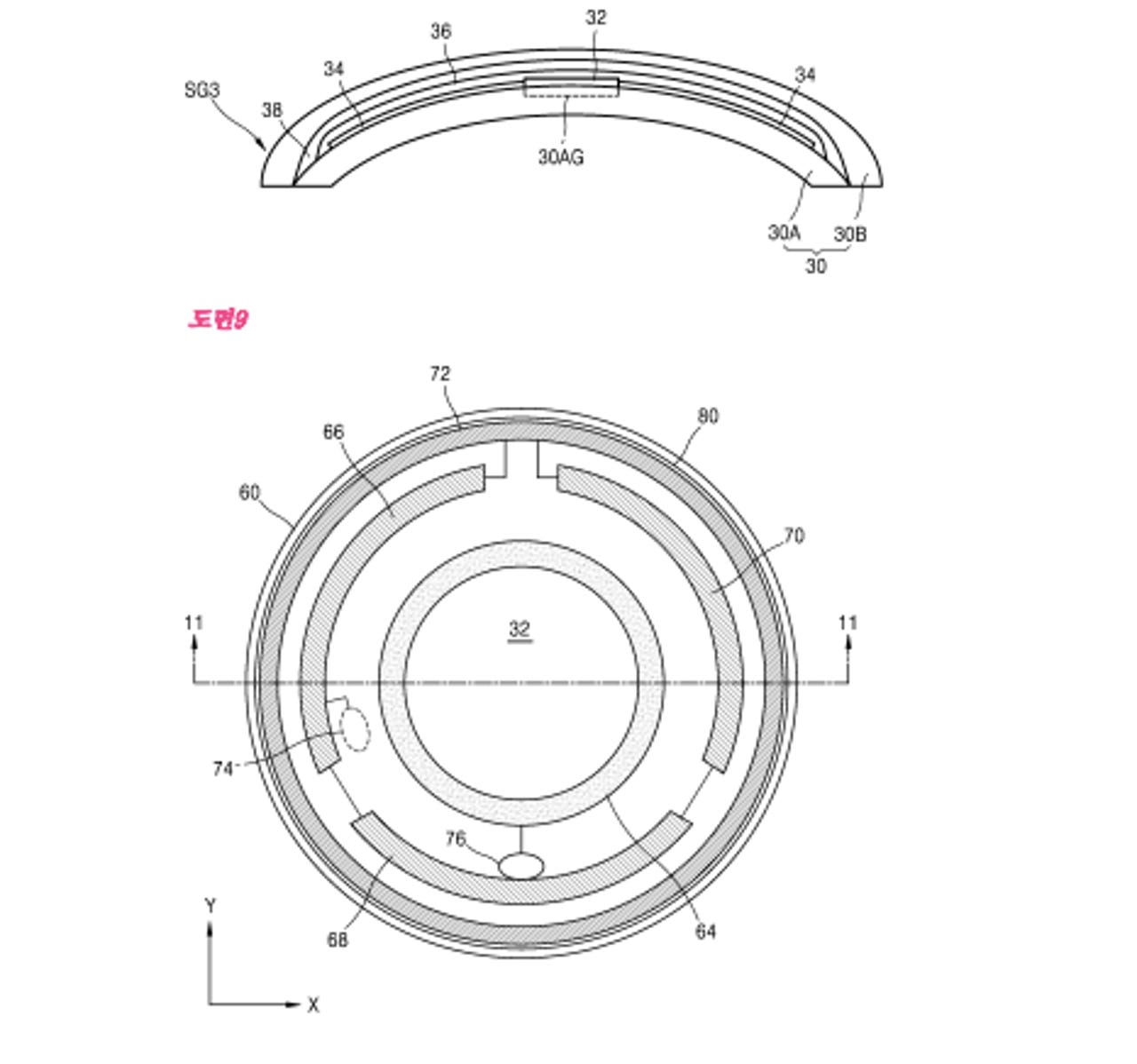Samsung's smart contact lenses could pack a camera and wireless charging


Samsung patents Google Glass right in your eye.
You may have felt creeped out by other people looking at you through Google Glass, but what if you never knew someone was looking at you through the device?
Samsung is interested in creating such a device in the form of a smart contact lens with an embedded camera and display. Samsung details the technology in a Korean patent application, first picked up by SamMobile.
Samsung of course is investing big time in IoT and the smart lens, though just on paper for now, would add to the plethora of things it's making to interface with smartphones, including watches, belts, VR companion devices, TVs and white goods.
Samsung thinks that in the context of augmented reality, the smart lens can overcome the narrow viewing angle of Google Glass and due to its proximity to the retina, would negate the need for eye-tracking.
The smart lens would comprise of several layers housing transparent electronics, including an antenna to wirelessly send data between a connected smartphone right to the retina of the wearer's eyeball.
Just like Google Glass, the contact lens would be capable of taking snaps and relaying navigation data from a smartphone.
As all Glass explorers found out and Apple Watch wearers know, batteries and charging remain problem for wearables. So how do you charge a contact lens? Samsung's answer is an external antenna on the lens that allows it to draw power wirelessly from the smartphone's battery.
Samsung doesn't go into to much detail about power supply, but it is also ploughing R&D dollars into wireless charging technologies for smartphones.
Two years ago Google announced it was working with pharma company Novartis on a smart lens, though it was envisaged as a way to monitor glucose levels in diabetics. Novartis also saw potential in the lens as a next generation contact lens.